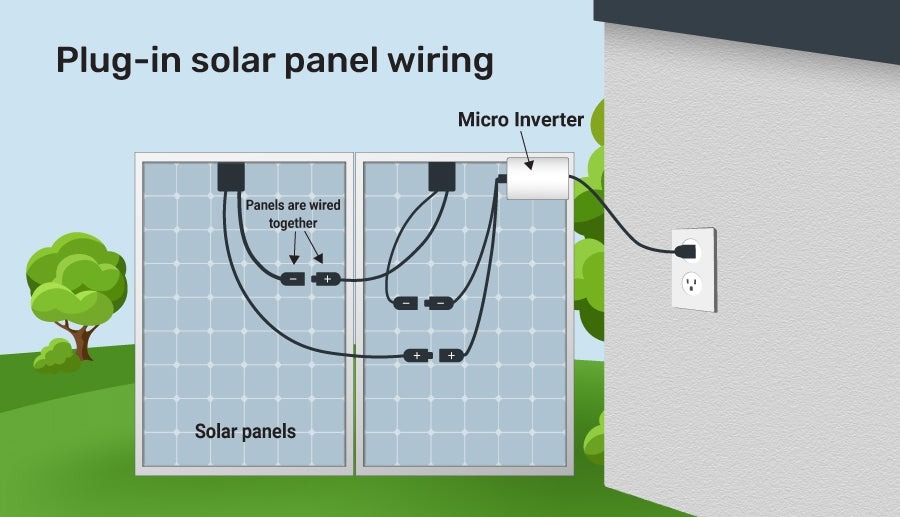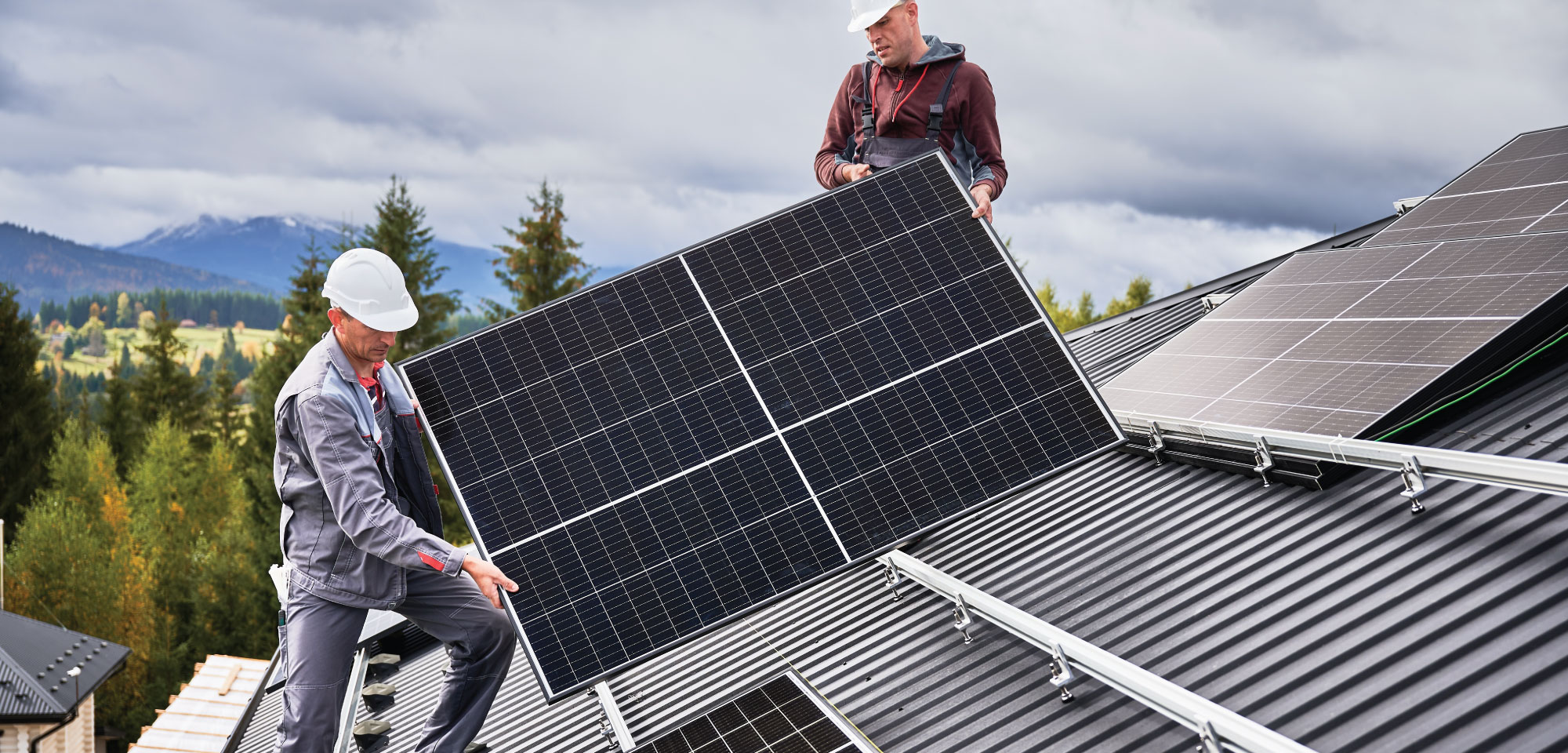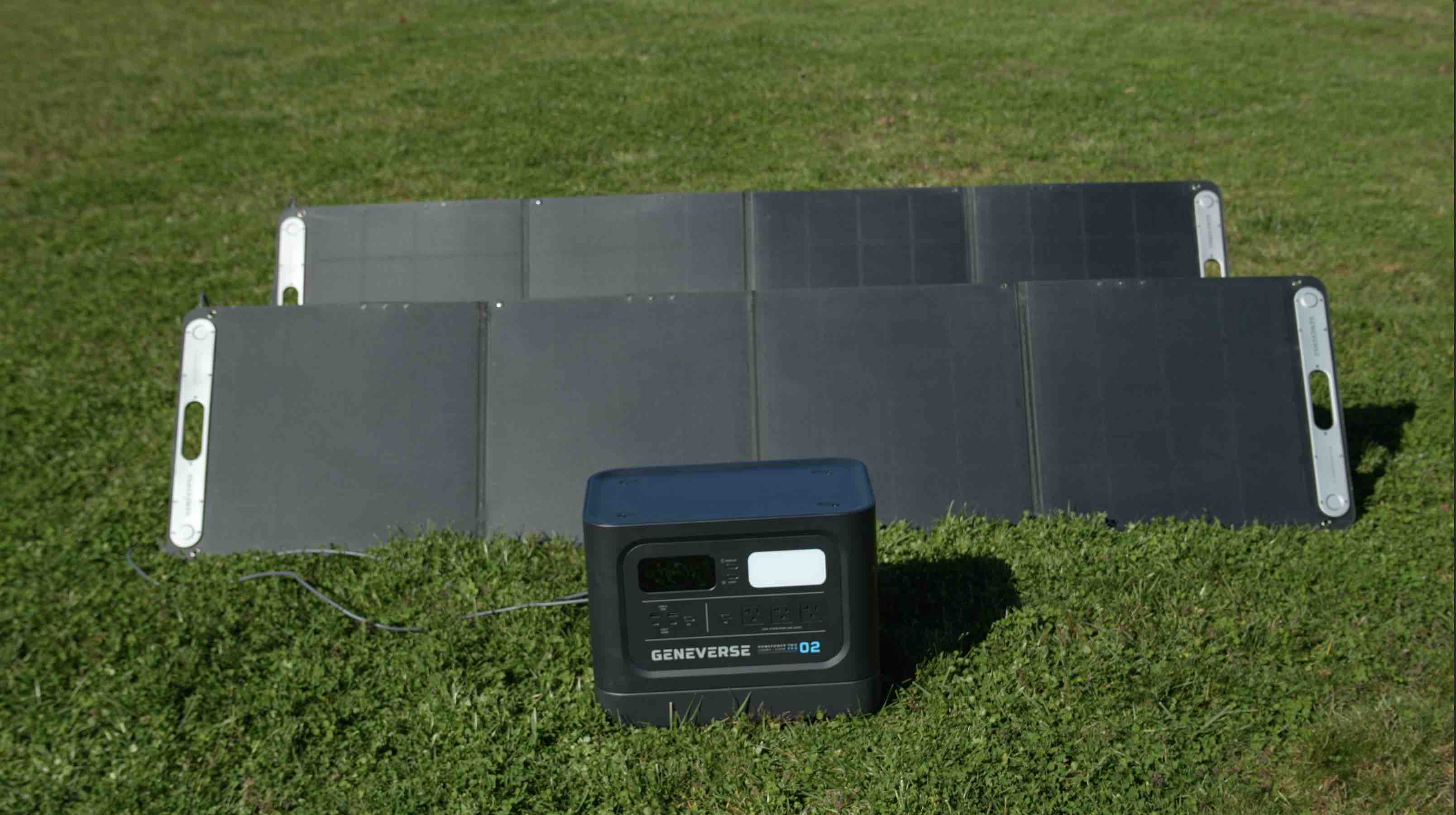
Find out what solar panels cost in your area
We think home solar panels are so great, we dedicated our whole website to them. We have written hundreds of thousands of words of educational posts, and host tens of thousands of reviews of solar installation companies, written by ordinary homeowners like you.
So please don’t get us wrong when we say you should avoid plug-in solar panels.
Why? There are many reasons. Safety, efficiency, and quality are just a few.
We know it’s tempting to think of solar as something you can just set up in your yard and enjoy, but that's a terribly inefficient way to do it. If you ask us, the best place for solar panels is on your rooftop, installed onto permanent metal racks by a professional—or an accomplished DIYer armed with a lot of knowledge.
If you still feel like you want to learn more about why plug-in solar panels are a bad idea, read on! If you’re ready to see whether a professionally installed system is right for you, use our calculator below.
Key takeaways
-
Plug-in solar panels feature a microinverter affixed to their back and a cord to plug into an exterior wall.
-
Even though they cost less than a professional solar panel installation, plug-in solar panels are not worth the expense.
-
Plug-in solar panels do not qualify for solar incentives like SRECs or local rebates.
-
The safety risks and potential utility code violations for plug-in solar panels outweigh any financial benefits (which are minimal).
-
For small-scale energy generation, storage, and usage, consider purchasing a solar generator instead.
How plug-in solar panels work
The main draws to plug-in solar panels are that they are simple to understand, and they're cheap.
Plug-in solar panels (also called “plug and play solar panels”) are typically offered in pairs and can be wired together into arrays that range from those two base panels (about 640 watts) all the way up to as many sets as you want.

Since about 2012, companies like PluggedSolar and SunPlug have been offering these inexpensive plug-in solar panel kits as a way to lure budget-minded do-it-yourself homeowners into the world of solar energy. Similar kits can also be found on Amazon at a price range of $500-$1200.
Affixed to the back of each solar panel in a plug-in solar array, is a microinverter. Inverters are responsible for converting the DC electricity which the panels generate into AC electricity which your home appliances use.
Microinverters comply with auto-safety shutoff standards, so if they detect a power drop from the grid or your home, they will not allow electricity to flow back into your home circuits or back to the grid.
This is to ensure line-workers who may be troubleshooting problems don’t get zapped while they’re fixing things back up. They also help protect kids who may be messing with the cord end if the panels aren’t attached to the wall.
Coming out of the solar array is a plug, just like the kind coming out of your vacuum cleaner. Plug-in solar kits also come with ground mounts for the panels to sit on an angle to face the sun. Plop the array in the sun, plug it in to your wall outlet, and you’ve now gone solar. Easy peasy, right? Nope.
Why plug-in solar panels aren’t worth it
The marketing materials for plug-in solar panels are chock-full of easy-to-understand language that sounds like, “Hey, these are revolutionary! Instead of something consuming energy when you plug this gizmo into your wall outlet, it generates electricity for you to use in your house! Act now, we’ll throw in a second solar panel for half the price!”
For the most part, the statement is true. If you plug in an array of solar panels into your wall outlet, the electricity the panels generate will definitely flow into your home. However, there are big risks in doing this.
For one, you are supposed to use a dedicated circuit for the plug-in solar array. That’s because if there’s too much energy flowing into and out of any one circuit, you can be asking for a fire. By dedicating only a single circuit to have your solar energy feed into your electrical panel with, you’re reducing your risk.
Safety concerns
Considering how these panels are marketed, it’s basically like giving a 16-year old keys to a sports car - there’s bound to be mishaps.
How many people are going to get jazzed up when their plug-in solar panels arrive, set them up on the back patio and plop them into the same outlet and circuit which powers their hot tub? Probably a non-insignificant amount. You’re asking for trouble. Not only that, but the cord which connects the panels to your wall may also be a trip hazard.
Costs
Plug-in solar panels are significantly less expensive than professionally-completed installations, especially upfront. You can have about 600 watts of plugged-in solar for about $1,000. That equates to about $1.67 per watt. Professional installations range from $2.50 to $3.00 per watt in the United States.
Think carefully about what you’re paying for, though. With plugged-in DIY solar panels, yes you could easily take your sets of panels with you if you decide to move, but… they look clunky, take up space in your lawn or patio, you can bump into them, they need a dedicated circuit, and you or your guests can trip over the cord.
Since plug-in solar panels are not installed by a licensed electrician or signed off on by your utility company, they may actually be illegal in some areas. Plug-in solar panels violate many local utility codes because they feed electricity into a home circuit without dedicated shutoff and safety features.
In other areas, you will not be able to reap the benefits of hefty solar power incentives like state renewable energy certificates (SRECs) or local rebates. While they may qualify for the federal 30% investment tax credit, you’ll probably be better off applying that credit to a larger, professionally-installed solar installation.
Moreover, a couple of plug-in solar panels aren’t really going to save you a significant amount of money on your electricity bills. To make a big difference on your electric bill, you’ll usually need at least a 5 kilowatt system, or about 15-16 panels.
Professional roof mount installs also look better, they are safer, and can be an integral part of a whole home energy management system.
Alternatives to plug-in solar systems
So, you might be wondering, if plug-in solar panels aren’t the way to go, what should I do instead? You can explore getting a professional solar installation, or ask yourself carefully why you want to be getting solar panels in the first place.
Perhaps you just want a little peace of mind knowing you are doing a little bit to generate your own electricity, or maybe you want a source of energy for when the grid is down or to run some equipment in the backyard.
If that’s the case, there are portable solar generators which fit the bill much better than plug-in solar panels.
Professional solar installation

Though the lower cost of plug-in solar panels may seem enticing at first, your best bet is to go with a professionally-installed solar panel system.
Professional solar installations are visually appealing, increase the value of your home, can provide resilience when the grid is down, last over 25 years, and help you save a lot of money on your power bills.
For all these reasons, we recommend you get quotes from qualified solar installers. You can use our calculator to see what specific rebates and incentives you can qualify for, in addition to the federal tax credit of 30%.
Solar generators

A portable solar generator uses solar panels to capture the sun’s energy, and then stores that energy in a battery to be used later.
Over the last couple of years, portable solar generators have started to gain a lot of popularity. In a tidy package, you can generate, store, and use electricity.
Simply hook up portable solar panels, like a folding solar panel kit, to charge them up through the day, and you can use them in the evening through early morning for whatever you need, off grid. Some models like the Solar Power Cube pictured above have the panels integrated into their design on wheels.
Solar generators have a wide range of capacities, from their ability to power entire home circuits when the grid is down, to smaller applications, like providing camp lights and laptop power overnight.
Check out our recent coverage on how they work and our recommendations on the best solar generator models for your needs.
Dan is a solar journalist and content advisor with SolarReviews. He also works with solar installers and solar nonprofits to develop and execute strategic plans. Dan Hahn founded residential solar energy information and policy resource, Solar Power Rocks, in 2007. As the site's chief architect and senior editor, he developed a national framework for evaluating the impact of residential solar energy policy. Possessed with a mission to communicat...
Learn more about Dan Hahn